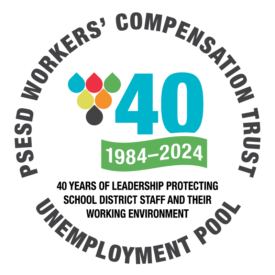Transportation is one of the highest risk areas in schools and creating automotive liabilities can lead to injuries, financial losses, and potential litigations. School districts, just like many other workplaces, are struggling with shortage of staff in most areas, including the high-risk field of student transportation.
While untrained drivers are covered from both a workers’ compensation and auto liability insurance standpoint, the safety of students, staff, and even the public may be endangered. Increased claims activity as a result of a potential accident means districts could contend with rising insurance premium costs. Lawsuits resulting from an unqualified driver causing injury would target all involved parties, meaning districts could incur substantial legal expenses even with the appropriate indemnity agreements. And we haven’t even mentioned loss of trust with employees, students, parents, and the public and damage to reputation.
“Now is not the time to take shortcuts or otherwise lessen your bus driver standards,” said Dave Randall, Vice President of Public Entity Underwriting at Safety National. “Doing so puts the life and health of students at risk. While utilizing other school staff members to fill these positions sounds like a great contingency plan, remember that these drivers are responsible for very precious cargo.”
The recommendation of insurance companies is that, despite the difficulties, school districts should reconsider the risks of filling driver gaps with unqualified staff or candidates. Hiring policies should be well thought-out, objective, and evenly applied to existing employees and new employees. Some of the recommended policies are:
- Check all current motor vehicle records. This review allows the district to make sure its drivers meet the safety criteria and forecasts the possible outcomes for how a particular candidate could perform in the future. Check records of new candidates, but that of current employees too, preferably annually.
- ALL drivers must meet specific criteria that is stated in writing and is applied evenly. All drivers should be aware of requirements and understand the consequences of any infractions per district policies and procedures.
- Have in place a driver notification system that informs the transportation supervisor of any incidents or accidents. Maintaining records and tracking trends will minimize driver infractions going undetected.
- Allow new employees to start work only after completing appropriate safety training.
The OSPI Student Transportation department provides essential services to support the safe and efficient transportation of the students of Washington state. The office is authorized by the Legislature, WAC 392-144, to adopt the rules governing the training and qualifications of school bus drivers. Patty Enbody with OSPI Student Transportation stated that there has been an ongoing shortage of bus drivers, and COVID has exacerbated the problem. Ms. Enbody recommended that districts always abide by the OSPI rules and regulations that are in place in order to best protect students and staff.
Transportation Director for the Mukilteo School District, Cindy Steigerwald commented that, “In Washington, school districts that want to use OSPI funding must follow the OSPI manual and script for hiring and OSPI as a third party must authorize school bus drivers. According to Cindy, Washington is a leader in the nation in this respect and the majority of districts follow this path. The OSPI standards are higher than in other states.”
Using external vendors can be another option that a district can consider. If member districts use an external vendor, they are highly encouraged to send all applicable contracts to their general counsel or liability carrier PRIOR to accepting services to ensure proper coverage. Assistant Superintendent, Maurene Stanton with the Stanwood-Camano School District supports the use of external vendors stating, “We’ve been hiring Charter buses for our athletic events, and most recently, we’ve done a job description for Motor Pool driver and are working with PSE to determine a rate of pay. We hope to hire people who can at least drive a van for our McKinney-Vento, special education routes.”
To support and speed up transportation training efforts, PSWCT-UP offers our members the on-line Vector Solutions (SafeSchools) training system at no charge. These group training bundles will help reduce the risk of workplace injuries and ensure compliance with safety and health regulations. The trainings are grouped in bundles by classification to make it easy and convenient to set up your training plans and are now available for Bus Driver, Bus Mechanic, and Bus Driver/Mobility Assistant. Please collaborate with your own district’s Vector Solutions contact (usually someone in the HR department) to gain full access, have the right to assign trainings, and follow the dashboard for completion.
Although Vector Solutions training bundles constitute the general foundation of safety and environmental health trainings for schools, member districts also need to add their own trainings on hazards and protective measures specific to their own workplace. While the Vector Solutions dashboard provides information on when a training was completed and by whom, districts need to document all additional trainings, including date, name of participants with a short description. From the point of view of legal compliance, “if it’s not in writing, it didn’t happen.”
Institutionalizing important info for continuity is another factor to consider. PSWCT-UP recommends having a safety and environmental health shared folder on the district’s shared web platform. Subfolders can be set up for different areas and subjects, such as transportation, custodial services, laboratories, art, ergonomics, safety committee, etc. Loss Control and Industrial Hygiene consultants are available for site inspections and support.
For questions, please feel free to reach out the Client Relations Team if you have any questions or concerns.



